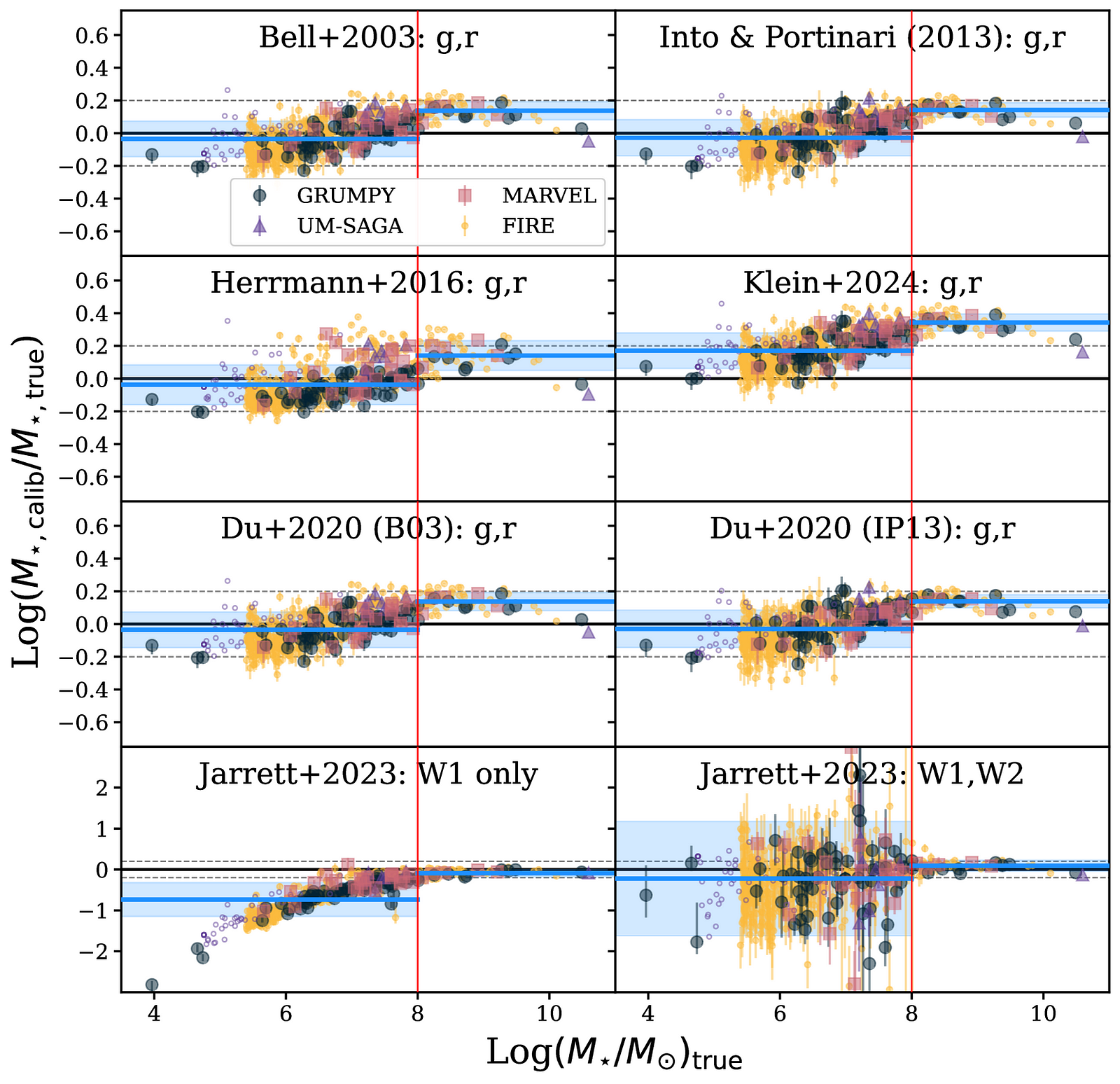How much stellar mass is there in a galaxy? We see a certain amount of light from galaxies and that implies a certain number of stars. It depends on the mix of stars and the redder, the easier the conversion is (less dust, or over-weighting blue, short-lived stars).

And honestly, the problem of weighting the stellar mass of galaxies had shifted into the “solved problem” category. Not perhaps something to get complacent about but no longer estimates what were orders of magnitude off. I quite clearly recall a talk where the uncertainty was set at 0.2dex (less than a factor 2) for any survey.
But that was for big galaxies, that have been around a long time. Think Milky Way and bigger. We studied those the most, we understand those the best. We are entering the era of the Dwarf (insert obligatory Tolkien or Rings or Power reference here). We will observe many more dwarf galaxies in the near future and understanding dwarf galaxies is critical in our understanding how galaxies form, reionize the Universe, and coalesce into bigger galaxies.
And stellar mass estimates for dwarf galaxies…well…
This was a problem that was neatly show at the NASA Galaxies Science Interest Seminar by Professor Mia de los Reyes: YouTube.
Which brings me to this week’s paper and one I was looking forward to:
Stellar Mass Calibrations for Local Low-Mass Galaxies
Mithi A. C. de los Reyes et al.
[astroph]
Which addresses how well each stellar mass conversion works for dwarf galaxies that we have made in simulations. This has a few benefits: first you know the ground truth (the galaxy is in your computer) and secondly, it allows you to sidestep any issues with photometry between different surveys. Gotta keep track of all the systematics and here is one specific one you want to tackle.

The first is straight-up conversion from one filter and a color into a mass. As you can see, in the dwarf regime, the deviation from true is dramatic, often quite dire. This will work okay for your survey of big galaxies or even Milky Cloud Galaxies (Dr de los Reyes is a proponent of calling these not after Magellan anymore, see here).


But knowing this, one could, conceivable, calibrate this conversion (this mass-to-light ratio) and make it mass-dependent. As the plots above show, it can be fixed. Some.
But we rely on full Spectral Energy Distribution modeling these days to get stellar mass, dust mass, star-formation rates and increasingly, star-formation history and metallicities as well. How do these do in the Dwarf regime? Below are a few different star-formation histories. Each a different function of the age of the galaxies and how many stars it produced at that time.


There are even less parameterized functions to account for the star-formation history. There are some in the above plot.
The point is that there is still an offset. Not massive in terms of big galaxies, but critical if you want to understand smaller galaxies. It those are suddenly all under-estimated, your whole study can be critically biased.
I think a systematic approach such as this one, is present-day extra-galactic science at its best. A methodical study of the inherent noise and bias in our estimates. I have always been a bit nervous about the fact that so many of our SED codes are effectively calibrated on NGC 891 and maybe the Sombrero and Arp 220. This is getting better but one worries about the effect of the survivor bias in what was studied in detail.
No comments:
Post a Comment